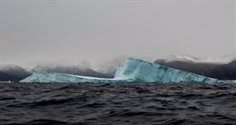Aug. 23 () –
The NASA’s James Webb Space Telescope (JWST) has captured two new images of Jupiter, which have allowed scientists to observe new clues about the internal life of the planet and see details of its rings, small satellites and even galaxiesas reported by the US space agency.
“To be honest, we really didn’t expect it to be that good.“, said astronomer Imke de Pater, who has led the operations, as part of an international collaboration for Webb’s Early Release Science program.
The released photographs allow us to see that the auroras extend at high altitudes over the north and south poles of Jupiter. These images come from the near-infrared camera (NIRcam), which has three infrared filters. “It is truly remarkable that we can see details of Jupiter along with its rings, small satellites, and even galaxies in a single image.“, Add.
Since infrared light is invisible to the human eye, the light has been mapped onto the visible spectrum, NASA clarifies. Generally, longer wavelengths appear redder and shorter wavelengths appear bluer.
The telescope James Webb has identified Jupiter with its faint ringswhich are a million times dimmer than the planet, and two small moons called Amalthea and Adrasthea.
Likewise, the images have allowed us to see the ‘Great Red Spot’, revealed Imke de Pater, who explained that it is such a big storm “that could swallow the Earth”and this time it appears white because it reflects a lot of sunlight.
“The brightness here indicates a high altitude, so the Great Red Spot has high-altitude mists, as does the equatorial region.“, details Heidi Hammel, Webb Interdisciplinary Scientist for Solar System Observations and Vice President of Science for AURA.
“The numerous bright white ‘spots’ and ‘streaks’ are likely high-altitude cloud tops from condensed convective storms. In contrast, the dark belts north of the equatorial region have little cloud cover.“, Explain.




![[Img #74661]](https://thelatestnews.world/wp-content/uploads/2024/12/The-power-of-ultrasound-150x150.jpg)








![[Img #74661]](https://thelatestnews.world/wp-content/uploads/2024/12/The-power-of-ultrasound-300x200.jpg)


Add Comment